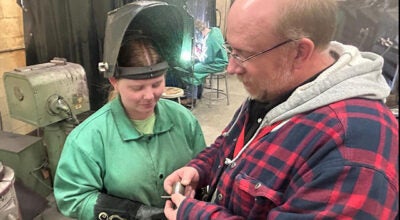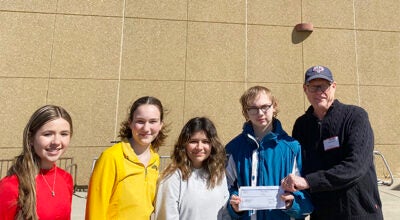Southwest Middle battles bullying issue
Published 9:43 am Friday, November 12, 2010
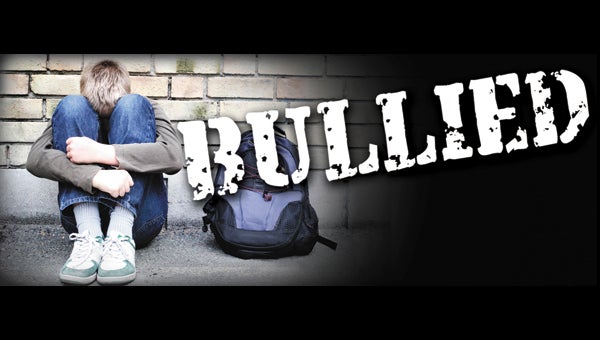
See the Albert Lea Tribune on Friday for an in-depth look at bullying at Southwest Middle School. The report is the first of a series on bullying in the local secondary education system. -- Graphic by Stacey Bahr/Albert Lea Tribune
Editor’s note: This is the first of a weekly series on the issue of bullying.
Students just don’t know how to stop it or how to stop being a part of it.
Parents either hate it or pretend their child isn’t participating in it.
Teachers are often the first line of defense — if they see it. And if it happens at school.
Administrators are at a loss for how to ever get rid of it.
Bullying — the ever-transforming and permeating problem in schools and out of schools.
In a national survey of more than 43,000 high school students, 50 percent of students admit to bullying someone in the last year. About 47 percent of students said they had been bullied, teased or taunted in a way that deeply upset them in the past year, according to the Josephson Institute of Ethics.
The Albert Lea School District has policies prohibiting physical, emotional or social bullying that also states students should report any bullying to any school personnel. The school policy itself lists more than 20 ways a child could be bullied, which makes it difficult for school administrators to ever be able to solve the problem.
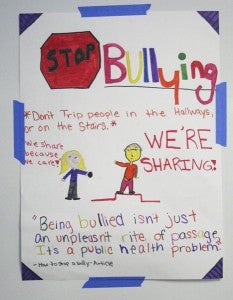
Shown is one of the anti-bullying posters hung around Southwest Middle School. Some of the tips written on the sign include not to trip people in the hallways or on stairs, and it says “We share because we care!” -- Kelli Lageson/Albert Lea Tribune
Many parents argue that middle school is the most difficult time for students. They witness their seventh-grade children struggle with a bigger social pool and new class structures than they had in sixth grade.
An Albert Lea High School senior, Maddi Dickey, was the target of bullying during seventh grade at Southwest Middle School. A student in her grade who had gone to a different elementary school decided to make Dickey his target.
“I still don’t know why he chose me,” Dickey said.
Dickey said she did her best not to let it bother her when the boy would taunt her. He even created an entire website with a poll that asked the site’s visitors whether they hated Dickey or not.
“I just wondered why he decided to pick on me,” Dickey said. “He had a lot of people in on it, too.”
Dickey said that eighth-graders who she didn’t even know would throw folded-up paper at her in the halls. The student who antagonized Dickey moved away, and contacted her later through instant messaging to apologize.
Marsha Langseth, Southwest’s principal, said students at that age are going through emotional, physical, sexual and mental changes.
“They’re very impulsive,” Langseth said.
She acknowledged that bullying is present at the school but said it’s something that happens in every school. Langseth also said kids watch adults bully each other as well, so it’s something that will be present in their life, which is why it can be helpful to teach students how to be above it or how to deal with it.
“All the programs we have are working toward changing the atmosphere,” Langseth said. “Of course we want 100 percent of kids to feel safe here.”
Bullying survey

This poster hanging in Southwest says "Stop Sevy-Slapping," which is slapping seventh-graders or pushing books out of their hands. -- Kelli Lageson/Albert Lea Tribune
Southwest staff prepared a survey for the students in December of 2009 to get a better idea of what students thought bullying is or where in the school they didn’t feel safe. The results were studied by staff and certain new practices like active supervision in the halls were implemented.
Southwest teacher and student council adviser, Jennifer Henschel, said the majority of students felt safe in all areas of the school, but there were students who didn’t feel safe in common areas or before or after school while waiting for their bus. One part of that may be that Southwest is a transfer spot and students kindergarten through 12th grade are there during those times.
“We do have more teachers on bus duty than we had before,” Henschel said.
The ways that students had been bullied and had bullied others also gave the staff better insight into how to work on the problem. The top five ways students said they had been bullied in the survey were:
- Just kidding comments. By saying something mean or hurtful and then adding, “just kidding.”
- Calling names.
- Swearing at someone.
- Talking behind someone’s back.
- Giving someone dirty looks or excessively looking at someone.
Henschel said many students just don’t understand that after saying something hurtful or pushing someone that saying “just kidding” doesn’t erase what happened.
“Kids really think that if you do something and then say ‘just kidding’ it’s not really bullying,” Henschel said.
One way the staff has worked to combat that is to work with students on what the other student is feeling even after they say “just kidding.” The top-five ways students had bullied others were the same results as the ways students had been bullied. Langseth said that even though students knew the actions were hurtful, they were the most popular ways to bully someone else.
“They know what’s right, but it’s so hard for kids their age to do it,” Langseth said. “It’s a tough age.”
Henschel agreed that students in middle school are going through a tough transition.
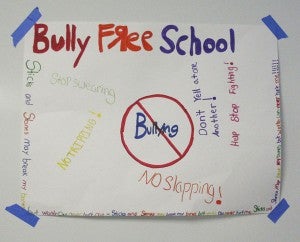
This anti-bullying poster at Southwest has lots of different tips like "Stop swearing" and "Don't yell at one another!" -- Kelli Lageson/Albert Lea Tribune
“At this age they’re really trying to find out who they are,” Henschel said. “It’s a confusing time.”
Anti-bullying programs
Other programs the school has been working on are Love & Logic, Positive Behavioral Interventions and Supports and a new program this year for eighth-graders called Courage Retreat, which will take place in December.
Love & Logic is a program that helps teachers help students with their problems. It addresses many issues and can include bullying. Staff ask students how they could work out a problem on their own, and if the student needs guidance, they can help with that, too. The point is to make students part of the solution.
PBIS is a program that within the next few years all staff at Southwest will be trained in. Langseth described it as reinforcing positive behavior by acknowledging it. The hope is that it will discourage negative behavior if students are acknowledged for their positive behavior.
One more way the school is hoping to reach out to students who have been bullied is by creating a “bully box” that would be a place where a student could write down their problem, put it in the box and then hear from a counselor later. Henschel said the box would be for the students who don’t feel comfortable going to someone directly.
The courage retreat for eighth-graders will aim to encourage students to stand up for themselves and others.
“It’s an awesome day,” Langseth said.
She said the examples the presenters give the students are aimed at middle school students, and the hope is that they will feel better about themselves.
Students get involved
During advisory periods students get a chance to be with the same class and teacher and form bonds, which is why Southwest implemented the daily advisories. One of the recent topics discussed was the national issue of children committing suicide because they had been bullied. Langseth said the students were shocked about the news and wanted to know what they could do to prevent it from happening in Albert Lea.
Langseth said the students, all on their own, came up with an idea to create posters for the hallways that discourage bullying.
“They want to be part of the solution instead of part of the problem,” Langseth said.

This anti-bullying poster at Southwest aims to stop the spreading of rumors. -- Kelli Lageson/Albert Lea Tribune
Some of the posters say things like “Don’t start rumors — they are hurtful,” and they even researched for the posters including the following quote they found in an article: “Being bullied isn’t just an unpleasant rite of passage, it’s a public health problem.”
Reporting problem
Langseth said the biggest problem she faces when trying to help kids who have been bullied is that many don’t want to report it. At the beginning of the school year during orientation, when the parents are there, she tells everyone that if a student is being bullied they should tell any adult in the school that they feel comfortable with so it can get reported.
“We’re not going to ignore it,” Langseth said. “We’re more than happy to help if you tell us.”
She said most times she talks to each of the students to get both sides of the story, because sometimes students who say they have been bullied also have bullied the other student involved.
“We try to resolve as much as we can unobtrusively,” Langseth said.
Henschel agreed that bullying is a tough problem to completely eradicate because students see their parents or adults in society bullying each other. She does think that the problem can be helped by teaching students how to be respectful and by recognizing good behavior.
“We really try to make this the safest place possible for kids,” Henschel said.
Next Friday: The bullying series will continue with a look at how technology and social networks have transformed bullying.
Please contact:
If you would like to be a part of the bullying series or know someone who would contact us at:
Kelli Lageson
379-3439
kelli.lageson@albertleatribune.com
Scott Schmeltzer
379-3420
scott.schmeltzer@albertleatribune.com



